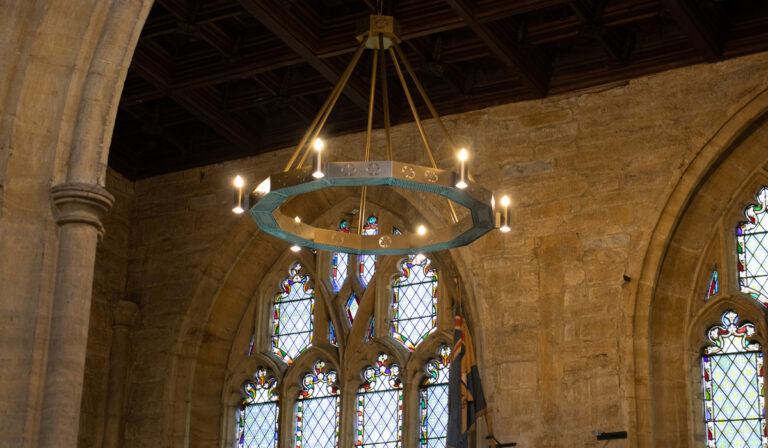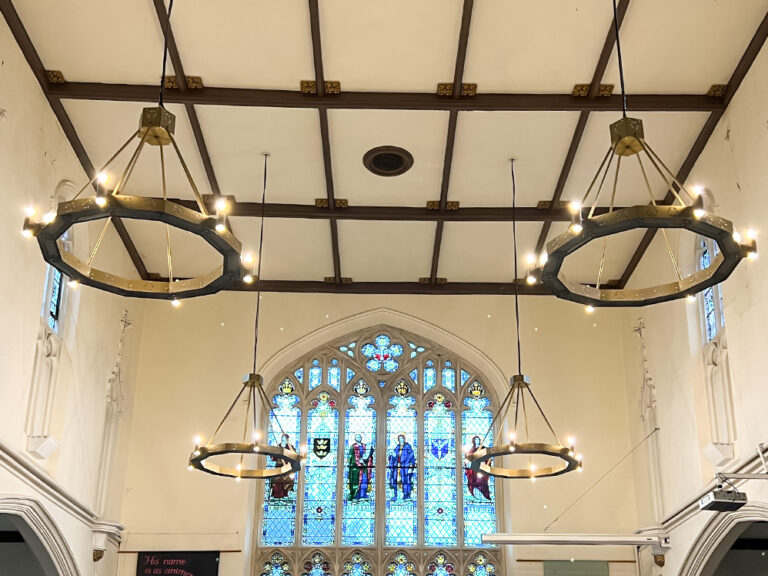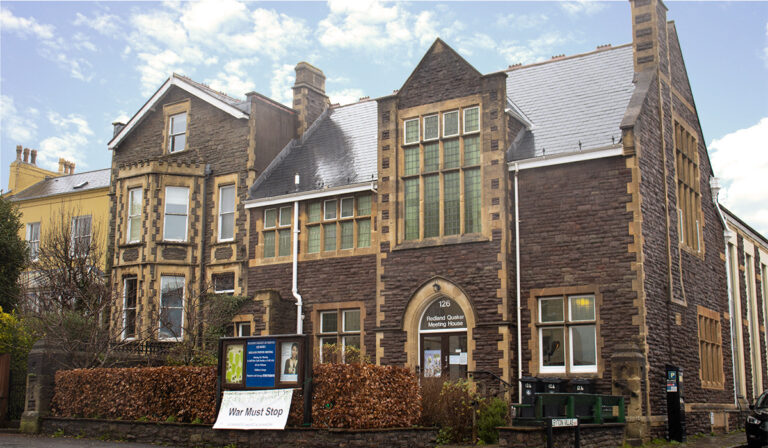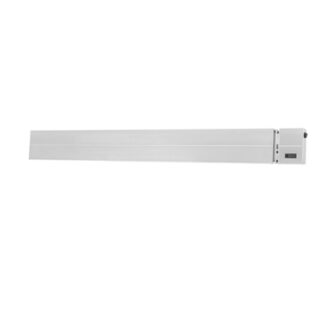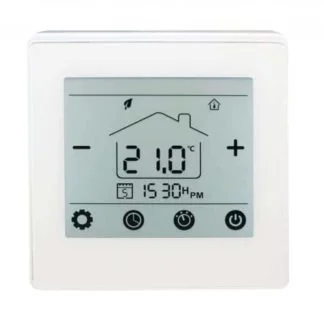No products in the basket.
Broadford Church of Scotland
Church trials have shown that running costs have reduced by just over 50% since using Herschel Infrared heaters
Background
Switching to net zero heating for churches is a huge priority and can be particularly hard to achieve whilst also ensuring comfort alongside the preservation of historic interiors. Herschel Infrared offers effective infrared heating that optimises both efficiency and comfort and can be run on a net zero basis with the correct energy supply. We were thrilled to work with Broadford Church of Scotland, Isle of Skye, who contacted us about their heating requirements and subsequently shared their feedback on how their new infrared heating solution is working for their congregation.
The church building (circa 1842) is stone built, lined with plasterboard and with no insulation. Likewise, the timber roof is uninsulated. The ground floor area of the main church measures 125 square metres with a further 45 square metres balcony area at the rear of the church (170m2 in total).
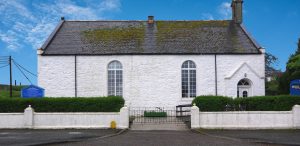
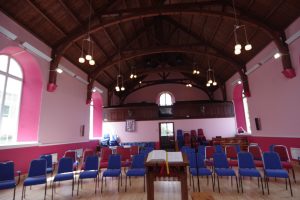
Solution
The church interior has had twelve Herschel Summit White heaters installed at the top of the side walls, mounted at 4.75 metres. This installation height was necessary due to the height of the windows. Summit White 2.6kW heaters provide a powerful yet zero light system for the church that allows them the flexibility to manage the warmth required in accordance with the usage of the space.
The church is available for community use during the weekdays and Mr William Graham who looks after the church building was keen to carry out trials to find the most economical way to provide heating in each situation of use. He is experimenting with how to best heat specific areas within the main space so that smaller groups or meetings could be held without all of the infrared heaters being switched on. As well as being thermostatically controlled by MD2 hard-wired controllers, each heater has its own switch as the church wanted the flexibility to be able to switch off individual heaters as required.
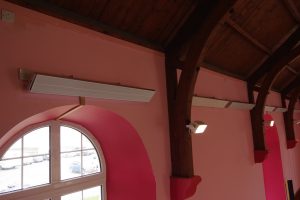 Testimonial
Testimonial
“For a Sunday service held in a large uninsulated building, the Herschel Infrared system has been very successful and provides a gentle very pleasant level of warmth with not a hint of the ‘hot head and cold feet’ syndrome. The infrared non light emitting heaters give a pleasant gentle warmth with no noticeable cold areas even at a temperature of 17- 18c. Once the heating is turned off, the residual warmth in the building takes much longer to subside than when previously heated with convector heaters.
It would seem that the infrared heating being directed downwards warms the floor, chairs and people. Previously the convected heat just rose up into the roof space. This seems to be a perfect heating system for our church”.
Mr Graham has shared some figures from some trials he has undertaken at Broadford Church of Scotland.
The outside temperature during the trial was: +7°C.
| Time | Inside temperature at start | kW used (includes some flood lighting) |
| 08.15am | 8.8°C | |
| 09.15am | 13.3°C | 33.3 kW |
| 09.45am | 15.5°C | 47.5 kW |
| 10.15am | 17.2°C | 61.6kW |
| 10.45am | 18.3°C | 74.3kW |
Mr Graham describes that the pre heat time in cold weather is just 2 hours. Previously, using the under-pew heating, the equivalent pre heat time was 9 hours. For Spring/Autumn the pre heat requirement is normally just 1 hour and 30 minutes.
In milder weather (circa 13°C outside temperature), this falls again and Mr Graham said that just 1 hour pre-heating time is sufficient prior to usage. In June, at last Sunday’s service, Mr Graham reports: “Now that the weather is milder, the church requires just 1 hour pre heat and about a further 40 minutes of heating during the service, switching it off for the last 20 minutes of the hour long Sunday service. The building seems to retain warmth for longer than when it is heated using convection heaters. The electricity consumption for last Sunday’s service from start of pre heat till the end of the service was 55kW. The congregation have no complaints whatsoever, describing themselves as being ‘toasty warm’ and the building seems to like being heated by the Summit infrared heaters….we don’t seem to have the same level of condensation and it just feels a lot more comfortable. When the heating is switched off, the residual heat in the building is sufficient to maintain a comfortable temperature for quite some time”.
Mr Graham describes how, in a similar trial with outside temperature of +11°C (weather overcast with rain and light wind, so little solar gain to impact the trial) just 47.6kW of electricity was used to preheat and warm the interior, costing them just £9.52 (@ 20p/kWh). The inside temperature started at 11.6°C, rising to 17.8°C within 90 minutes and the room temperature dropping by only half a degree during the 20 minutes when the heating was off. Mr Graham describes this as “perfect”, adding “the degree to which the building holds residual heat when heated by I/R is impressive”.
His trials have shown that running costs have reduced by just over 50% since using Herschel Infrared heaters (based on their electric tariff of 20 pence per kWh). Mr Graham has put together a plan for the heating of the church building for Sunday service for different times of the year moving forward, to involve some trial and error and possible tweaking, to ensure the most effective solution in terms of cost and warmth.
 Winter – Outside temp below 10°C: all Summit heaters (12) on for two hours preheat and all heaters on for the first 40 mins of the hour long Sunday service. Residual heat in the building being sufficient to maintain temperature. Mr Graham outlines that with the previous under pew heating, this would require 9 hours of preheating and then half of the heat would disappear to the roof resulting in ineffective comfort levels for the congregation.
Winter – Outside temp below 10°C: all Summit heaters (12) on for two hours preheat and all heaters on for the first 40 mins of the hour long Sunday service. Residual heat in the building being sufficient to maintain temperature. Mr Graham outlines that with the previous under pew heating, this would require 9 hours of preheating and then half of the heat would disappear to the roof resulting in ineffective comfort levels for the congregation.
Spring / Autumn – Outside temperature 10-14°C: all heaters (12) on for one and a half hours preheat + first 30-40 mins of the Sunday service. Residual heat in the building being sufficient to maintain temperature.
Summer – Outside temp above 15°C: all heaters (12) on for half hour / one hour preheat + reduced number of heaters to maintain temperature for the first 30 mins. Residual heat in the building being sufficient to maintain temperature.

